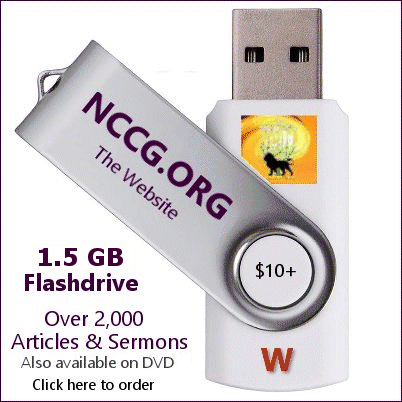RESOURCES
5-144000
A
B
C
D
E
F
G
H
I
J
K
L
M
N
O
P
Q
R
S
T
U
V
W
Y
Z
|
|

|
You Are Being Watched
Posted by Lev/Christopher on January 24, 2010 at 6:06am
in Current Affairs
Most of us notice the various photo enforcement cameras along Arizona interstates. But, you may not notice the additional 26 "freeway" cameras on Loop 101, the 27 cameras on the US-60, or the 37 cameras on the I-10.And that's only the beginning of surveillance in our daily lives.According to Tanya Schmit, a sales consultant at Southwest Access and Video Corp. in Phoenix, if you leave your house, you are bound to be on camera at least once a day. But that's a low figure. Schmit estimates 55 to 75 percent of all commercial buildings have some kind of surveillance system. So, if you plan a trip to the mall, be prepared to be "on camera in every store you walk into," Schmit says. People living in metropolitan areas have an even greater chance of being caught on camera. In 2005, the New York Civil Liberties Union reported nearly 4,500 surveillance cameras visible from street level in Manhattan, and in London, approximately 500,000 cameras are placed throughout the city watching for signs of illicit activity.In the Valley, students are caught on camera almost everywhere they go; almost every major college campus in the area has at least a few cameras on campus. The City of Tempe has cameras stationed throughout downtown; the images from which are broadcast on the internet.Bottom line: it is getting increasingly difficult for people to be anonymous in today's world and the debate of safety versus security is becoming an extremely prevalent topic with the growing use of video and camera surveillance. The Growth of SurveillanceVideo and camera surveillance started to become popular in the late 1990s, but the events of the 9/11 terrorist attacks brought surveillance to a whole new level.According to Schmit, "that's when the industry really started booming."After 9/11, Schmit said there was not only an increase in camera sales, but huge advancements were made in the analytics of cameras and what they do. "They can make cameras nowadays that can see out of an area the size of a pinhole," Schmit said. Schmit says the most recognizable type of camera is the bullet-style camera, which is a large sized camera that is clearly pointed in one direction. Another common camera is the dome style, which hides the direction the camera is facing, so that a person doesn't know which way the camera is shooting and what it's looking at.
Surveillance cameras are most often installed by government officials in public places for safety reasons, or by private businesses that want to protect their company from crime or theft, and in some cases, to monitor their employees. But, with the growing number of people who have cameras on their cell phones, peer to peer surveillance is easily becoming yet another way to be caught on camera. "We can capture pictures of individuals and people and post them easily on the web and circulate them," Greg Wise, a social and behavioral science professor at Arizona State University, said. Popular websites like Facebook, YouTube and Flickr are a few of the different ways to distribute photographs and videos online. Safety vs. Privacy Despite living next to a home outfitted with a video camera that overlooks her property, Schmit does not believe surveillance is an invasion of privacy. "It may be disrespectful, but it's not illegal to point a camera in another direction, and as long as you are doing what you should be doing, I don't think it is a problem," Schmit said. Instead, Schmit says video surveillance allows people to have a "second set of eyes."Wise agrees to an extent. "There is a sort of safety and security to surveillance. You can always find people. But on the other hand, shouldn't we be able to be left alone to a certain extent?" Wise saidAccording to a 2009 Harris poll, privacy may no longer be a top priority for a majority of Americans. The survey found that 96 percent of US citizens feel the federal government and law enforcement agencies should be able to use video surveillance in an effort to counteract terrorism and help protect its citizens in public places. Also, more than half (54 percent) of US adults were willing to put a portion of the government's stimulus funds toward setting up video surveillance to help reduce crime. But Wise says the usefulness of surveillance as a tool for crime prevention is minimal.
"It does reduce certain crimes that might be spontaneous things. But, as people get used to the cameras that affect begins to wear off," Wise said. Wise says people are going to be aware of the cameras initially, but after time people will continue to carry on with their normal ways, or will simply move to different locations where cameras aren't present. In addition, video and camera surveillance "is usually used for catching a person after the fact," Wise said. Such is the case with the video surveillance system at ASU's downtown campus.Richard Wilson, a police commander for the ASU Police Department, said the cameras are not monitored in real time, and there is no one who sits and watches them on a continuous basis. Instead, Wilson says it is used more like a forensic tool. "In the event something happens, we have the ability to see what happened," Wilson said. Otherwise Wilson says the video surveillance is primarily used to make "people feel more secure" and "the bad guys feel a little less bold when they know cameras are in an area." "That's why we really don't have any covert cameras," Wilson said. Similarly, Lieutenant Stephen M. Harrison, the public information officer for the Arizona Department of Safety, said his department typically looks at the content on freeway cameras run by the Arizona Department of Transportation only after an incident has occurred or if someone has called and reported a problem. "The TV itself is on. But, we don't have someone sitting at it and watching it, but if something happens, they can go and look at it," Harrison said. However, the freeway cameras are available to anyone through the Arizona Department of Transportation's website, and any person with internet access is capable of looking at shots at any of the camera locations, and Harrison says the live video stream is also made available to a majority of news organizations.
Becoming a less trustful society
According to the 2007 Electronic Monitoring and Surveillance Survey from the American Management Association and The ePolicy Institute, 7 percent of companies use video surveillance to track employees' on-the-job performance; 45 percent have turned to computer programs that monitor tracking content, keystrokes and time spent at the keyboard. In this situation, Schmit says surveillance in the workplace acts as a deterrent, and is used to make sure employees are doing appropriate work. But, whether it is employers that monitor employees in the workplace, everyday public surveillance by the government or even parents who install surveillance devices on their child's cell phone, Wise says we have become a less trustful society. "We often respond to [surveillance] with questions of privacy. But, we can also think of it as questions of trust of others," Wise said. "We all have become kind of objects of suspicion," Wise says, "Instead of turning the cameras on those people, we are suspicious of we have all become part of that same net."
http://media.www.ecollegetimes.com/media/storage/paper991/news/2010...
|


This page was created on 5 May 2010
Updated on 5 May 2010
Copyright © 1987-2010 NCCG - All Rights Reserved
|
|


